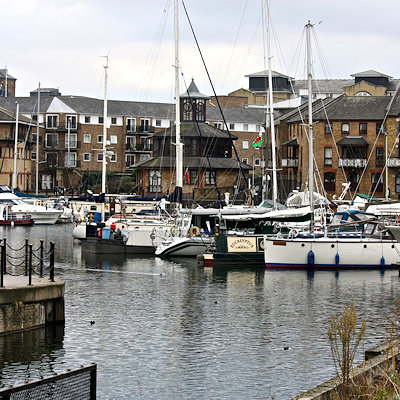
Like us on Facebook
PLACE NAMES


 
|
|
Limehouse
|

|
|
|
Limehouse is a district in east London, England, in the London Borough of Tower Hamlets. Located 3.9 miles (6.3 km) east of Charing Cross, It is on the northern bank of the River Thames opposite Rotherhithe and between Ratcliff to the west and Millwall to the east.
Limehouse stretches from Limehouse Basin in the west to the edge of the former Chinatown in Pennyfields in the east; and from the Thames in the south to the Victory Bridge at the junction of Ben Jonson Road and Rhodeswell Road in the north.
The area gives its name to Limehouse Reach, a section of the Thames which runs south to Millwall after making a right-angled bend at Cuckold's Point, Rotherhithe. The west-to-east section upstream of Cuckold's Point is properly called the Lower Pool.
The name relates to the local lime kilns or, more precisely, lime oasts, by the river and operated by the large potteries that served shipping in the London Docks. The name is from Old English lim-ast "lime-oast". The earliest reference is to Les Lymhostes, in 1356.
The name 'Limehouse' is sometimes mistakenly thought to be derived from the nickname for the seamen that disembarked there, who had earned the name Lime-juicers or limeys after the obligatory ration of lime juice the Royal Navy gave their sailors to ward off scurvy.
The name is found used in 1417:
Inquisicio capta sup' litus Thomisie apud Lymhosteys pro morte Thome Frank.
("Inquest held on the shore of the Thames by Lymhosteys for the death of Thomas Frank")
17 Aug, 5 Henry V. [A.D. 1417], inquest held before "les Lymehostes" within the liberty and franchise of the City, before Henry Bartone, the Mayor, and the King's Escheator, as to the cause of the death of Thomas Franke, of Herewich, late steersman (conductor) or "lodysman" of a ship called "la Mary Knyght" of Danzsk in Prussia. A jury sworn, viz., John Baille, Matthew Holme, Robert Marle, Henry Mark, Alexander Bryan, John Goby, Richard Hervy, Walter Steel, Peter West, Richard Stowell, John Dyse, and Walter Broun. They find that the said Thomas Franke was killed by falling on the sharp end of an anchor.
From its foundation, Limehouse, like neighbouring Wapping, has enjoyed better links with the river than the land, the land route being across a marsh. Limehouse became a significant port in late medieval times, with extensive docks and wharves. Although most cargoes were discharged in the Pool of London before the establishment of the docks, industries such as shipbuilding, ship chandlering and rope making were established in Limehouse.
Limehouse Basin opened in 1820 as the Regent's Canal Dock. This was an important connection between the Thames and the canal system, where cargoes could be transferred from larger ships to the shallow-draught canal boats. This mix of vessels can still be seen in the Basin: canal narrowboats rubbing shoulders with seagoing yachts.
From the Tudor era until the 20th century, ships crews were employed on a casual basis. New and replacement crews would be found wherever they were available - foreign sailors in their own waters being particularly prized for their knowledge of currents and hazards in ports around the world. Crews would be paid off at the end of their voyages and, inevitably, permanent communities of foreign sailors became established, including colonies of Lascars and Africans from the Guinea Coast. Large Chinese communities at both Limehouse and Shadwell developed, established by the crews of merchantmen in the opium and tea trades, particularly Han Chinese. The area achieved notoriety for opium dens in the late 19th century, often featured in pulp fiction works by Sax Rohmer and others. Like much of the East End it remained a focus for immigration, but after the devastation of the Second World War many of the Chinese community relocated to Soho.
On 12 February 1832, the first case of cholera was reported in London at Limehouse. First described in India in 1817, it had spread here via Hamburg. Although 800 people died during this epidemic, fewer than had died of tuberculosis in the same year, cholera visited again in 1848 and 1858.
The use of Limehouse Basin as a major distribution hub declined with the growth of the railways, although the revival of canal traffic during World War I and World War II gave it a brief swansong. Today, Stepney Historical Trust works to advance the public's education in the history of the area.
|
 Feel free to Email me any additions or corrections Feel free to Email me any additions or corrections
LINKS AVAILABLE TO YOUR SITE
| |





